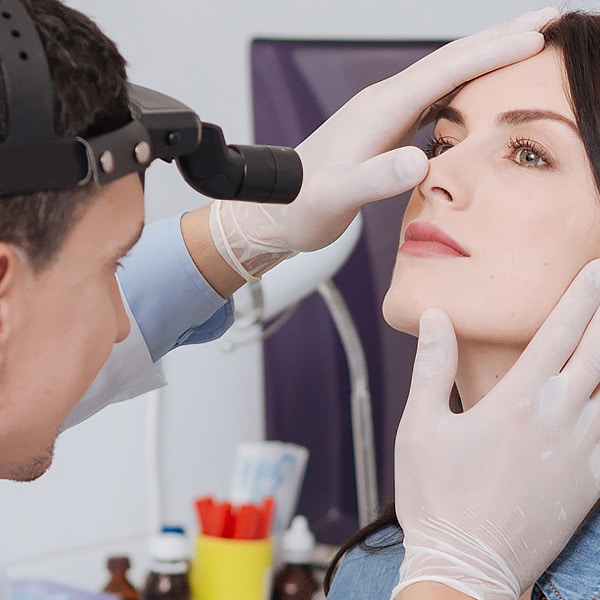There is a thin wall of bone and cartilage that separates the two passageways of the nose, called the nasal septum. When trauma or birth defects cause the septum to be pushed to one side or “deviated”, it can cause frequent sinus and nasal infections due to poor airflow and drainage of the sinuses. Many individuals have to breathe through their mouths thus leading to sleep problems and other quality of life issues. For those with deviated septums, nose bleeds can be difficult to control; and crusting from poor drainage is common.
Nasal septum repair, aka septoplasty, is used to correct deviated septums. During this procedure, the septum is straightened and realigned to the middle of the nasal passageway. The incisions are small and are made inside the nostrils so scars are not visible. The procedure can be done under local or general anesthesia, depending on the overall health of the individual and/or whether or not other procedures are being performed at the same time.
Septoplasty surgery is typically done as an outpatient procedure and patients go home the same day. As with all surgeries, septoplasty surgery involves certain risks including the risks that come with anesthesia. After septoplasty surgery, most individuals experience dramatically improved breathing and often improved sleep quality for themselves and their bed partners. Nasal and sinus infections become less frequent and less severe after deviated septum repair and uncontrollable nose bleeds become a thing of the past. Not only is function improved with septal repair surgery, but form and appearance are as well.
